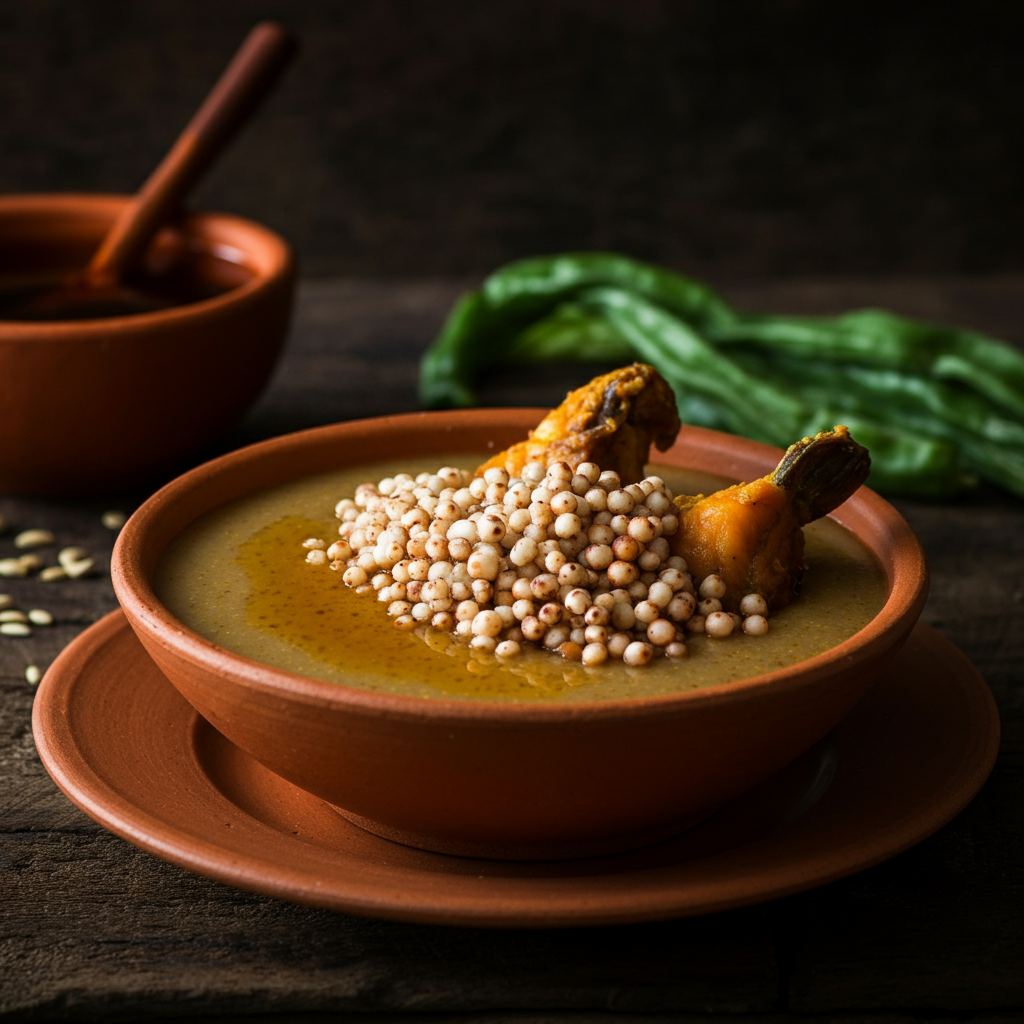Phane
Botswana
A type of thick porridge made from sorghum or millet.

Origins and History
Phane, a staple food in Botswana, boasts a history as rich and enduring as the land itself. Its origins trace back centuries to the agricultural practices of the country's indigenous peoples. Sorghum and millet, the primary grains used in phane, were cultivated long before modern times, providing sustenance for generations. The precise origins are difficult to pinpoint with complete accuracy, given the largely oral history of food traditions, but archaeological evidence suggests the cultivation of these grains in the region dates back millennia. The development of phane as a thick porridge likely evolved alongside the growing expertise in grain cultivation and processing techniques. Over time, phane became central to Botswana's culinary identity, solidifying its position as a cornerstone of the national diet.
Cultural Significance
Phane holds significant cultural weight in Botswana, extending beyond its nutritional value. It represents a strong connection to ancestral traditions and a sense of cultural identity. Often served during special occasions, ceremonies, and family gatherings, phane symbolizes community, unity, and shared heritage. It's a dish that transcends social boundaries, enjoyed by all segments of society. For many Batswana, phane evokes strong feelings of nostalgia and childhood memories, associating it with comforting warmth, family togetherness, and a sense of belonging. The preparation and sharing of phane often involves communal participation, reinforcing the social fabric of communities.
Traditional Preparation
The traditional preparation of phane involves a simple yet labour-intensive process. The sorghum or millet grains are first cleaned and thoroughly washed. They are then cooked in water or milk (where available) over an open fire or stove, often using a large pot. The cooking process requires patience and constant stirring to prevent burning and ensure a smooth, thick consistency. The texture of the phane can vary, depending on the cooking time and the type of grain used. Some prefer a softer, more easily digestible consistency, while others prefer a firmer, chewier texture. The final product is a hearty, filling porridge, often served hot.
Regional Variations
While the basic recipe for phane remains largely consistent across Botswana, subtle regional variations exist, reflecting the diverse culinary preferences and resource availability. In some regions, additional ingredients might be incorporated to enhance the flavor and nutritional profile. This could include the addition of vegetables, such as pumpkin or spinach, or spices like ginger or chili. The type of grain used might also vary based on local availability, with some regions favouring sorghum over millet, or vice-versa. These slight alterations, while not altering the fundamental nature of phane, add a unique character to the dish in different parts of the country.
Modern Interpretations
In recent times, phane has undergone some modern interpretations while still retaining its core identity. Some chefs and home cooks are experimenting with incorporating new ingredients and techniques, resulting in creative variations on the classic recipe. This might involve adding fruits, nuts, or seeds to enhance the taste and texture. The use of modern kitchen appliances has also simplified the cooking process, although many still prefer the traditional methods for its unique flavour and cultural significance. However, the fundamental essence of phane – its simplicity, heartiness, and cultural importance – remains unchanged, ensuring its continued popularity as a cherished culinary tradition in Botswana.